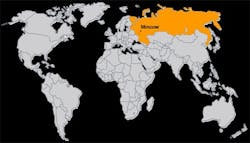Continental AG already had announced plans for greenfield consumer tire plants in Russia and the United States. The company recently revealed more information about the proposed Russian facility in Kaluga, a city located 170 km (close to 105 miles) southwest of Moscow.
“Start of construction is planned for the end of 2011, and, for us, this move represents a very important milestone for our local activities in Russia, as well as for our global growth plans,” says Executive Board member Nikolai Setzer, who, effective Aug. 1, 2011, will head up the realigned TIres Division.
“Indeed, our plans for Kaluga are such that we shall be able to expand the plant’s annual capacity to eight million passenger tires when the time comes.”
Because of signifcant growth in the country, the new foothold in the Russian market is a "strategic must" for Continental, according to Setzer. The company will benefit from the removal of import duties and from reduced transportation costs, thus making it much more competitive in Russia.
Continental primarily will produce summer and winter tires at the plant under the Continental, Gislaved, Barum and Matador names. The new employees will receive special instruction and training at other passenger tyre plants, a concept that proved to be highly successful for the success of the recently opened Hefei location in China.
"This way, we want to ensure that tires made in Kaluga for the Russian market are built right from the start in accordance with our high production standards that apply throughout the world, and so perform just as well as those made at our established factories,” says Setzer.
Continental is investing some 220 million euros (approximately $318 million) in the plant. Production is slated to start at the end of 2013.
Kaluga was chosen for the following reasons: its good infrastructure, central geographical location and "the good experience Continental has already had with the existing automotive electronics plant."
Aside from Russia, Continental is also expanding production capacity in Brazil, the U.S. and Europe in order to better serve increasing global demand on a long-term basis.
“Our strategic goal is to achieve above-average and profitable growth in particular in the emerging markets," says Setzer. "We shall therefore be investing a total of more than one billion euros over the next four years in order to build up additional passenger tire capacity."




